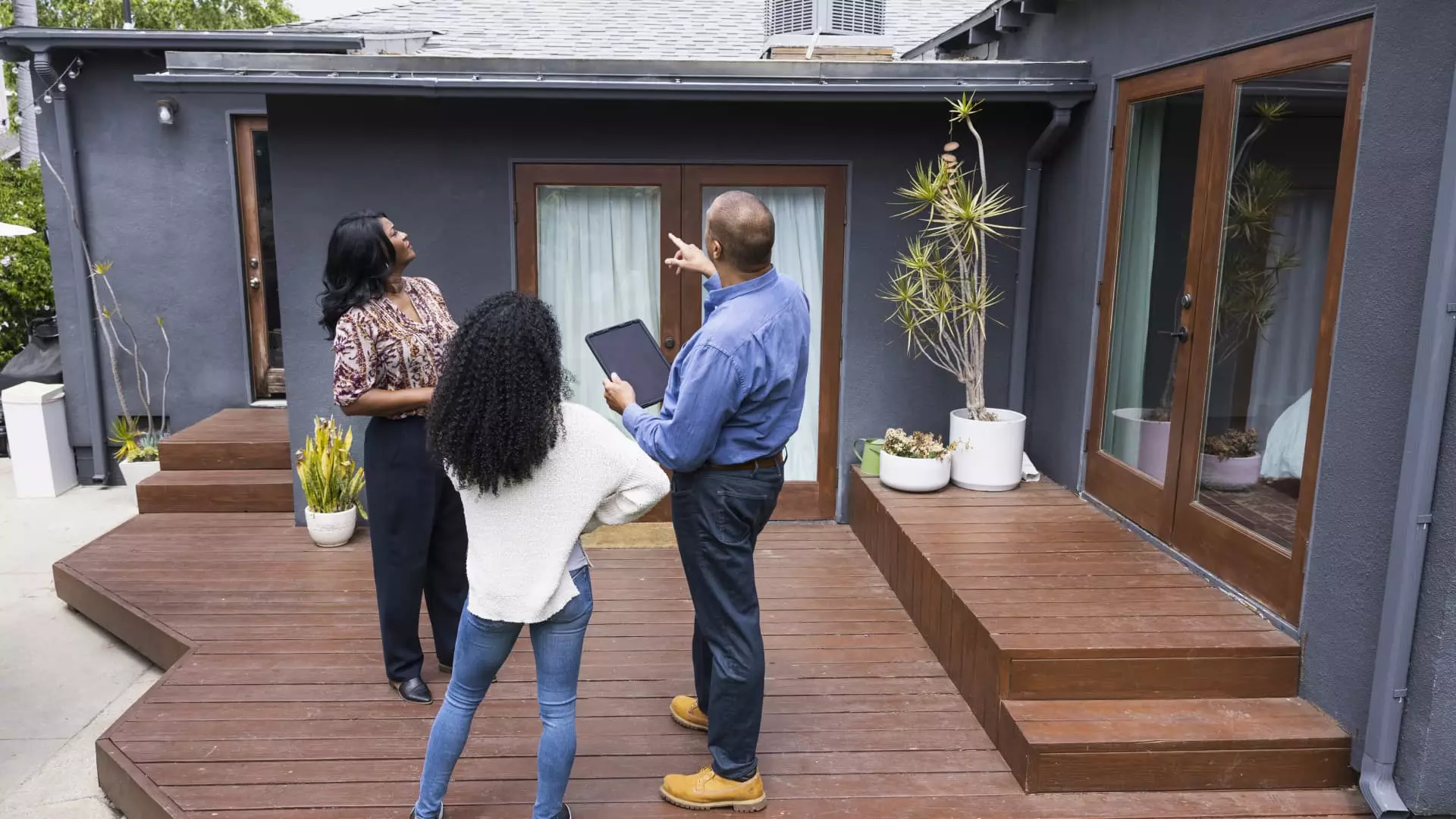The housing market is currently characterized by a paradoxical rise in mortgage rates alongside a backdrop of interest rate cuts by the Federal Reserve. This unusual dichotomy presents significant challenges for potential homebuyers, who must navigate an increasingly complex landscape dictated by various economic factors. With mortgage rates hovering above 7%, many prospective buyers are faced with tough decisions: should they wait for a potential drop in rates, or proceed with purchasing a home despite the high costs?
Recent statistics indicate that the interest attached to 30-year fixed-rate mortgages has surged past 7%, a stark contrast to the sub-3% rates available just two years ago. A report by Freddie Mac highlighted that as recently as September 2021, rates were about 6%, making this rise feel abrupt and pronounced. Economists like Mark Zandi, Chief Economist at Moody’s, stress that the current trajectory of mortgage rates needs to reverse significantly—targeting levels around 6%—to energize the housing market once again. The imposition of rising rates correlates with the fundamental principle of supply and demand, which dictates that elevated borrowing costs lead to diminished purchasing power for consumers.
Furthermore, the way mortgage rates align with the yield on the 10-year U.S. Treasury bonds serves as an underpinning for this rise. Investors’ perceptions of economic stability and inflation directly affect these yields, which, as indicated, climbed from approximately 3.6% in September to around 4.6% recently. This shift signals underlying economic concerns including inflationary pressures stemming from policy shifts proposed during the Trump administration, which could heavily influence market dynamics.
The ongoing volatility in the financial markets must also be acknowledged as a contributor to the recent spike in mortgage rates. The Federal Reserve’s active role—characterized by recent interest rate cuts—has not had the anticipated effect of lowering mortgage rates, revealing a complex interplay between various market variables. According to financial planner Lee Baker, current borrowers are subject to conditions that may induce higher costs due to investor sentiment regarding inflation and the broader economic landscape.
Moreover, issues surrounding national fiscal policies and external influences—such as international investors’ reluctance to purchase U.S. Treasury bonds—add another layer of complexity. Both Chinese and Japanese investors are reconsidering their involvement in American markets, further straining the conditions under which mortgage pricing operates.
As it stands, reluctance from lenders is becoming apparent. The premiums associated with mortgage rates, known as spreads, have exceeded historical averages, emphasizing a tightening credit market where lenders become more conservative in their lending practices. A disparity of about 2.4 percentage points above Treasury yields marks a risk-averse environment for mortgage providers.
As the mortgage climate remains precarious, potential buyers must engage in serious introspection. Is purchasing a home a sound financial strategy under current conditions? Many consumers may find themselves hesitating, weighing the risk of entering a market that lacks affordability against their professional and personal aspirations of homeownership. With the median price of homes rising to over $406,100—an increase of roughly 5% from last year—the financial implications of buying a home now appear daunting.
For those still intent on pursuing homeownership, financial advisers typically recommend substantial down payments to mitigate the burden of monthly mortgage obligations. Baker advises against jeopardizing funds reserved for a down payment in volatile markets, stressing the importance of financial prudence. Alternatives such as adjustable-rate mortgages may present an avenue for lower initial rates; however, this option inherently carries risks that could impose fiscal strain in the long term.
The consensus among economists points to a continued challenging environment for both the housing market and mortgage rates through 2025. Expectations are that we would not see mortgage rates return to the 6% threshold until after this period, given the myriad of economic pressures at play. Buyers must remain vigilant about their financial situations and strategic in their decisions—balancing the emotional desire to own a home against the financial realities of an evolving marketplace.
Ultimately, the prevailing attitude toward home buying is that of cautious optimism mixed with realistic assessment. It calls for informed decision-making in a time when patience may just be the most crucial asset a prospective buyer can possess. As consumers navigate these fluctuating economic landscapes, the solutions they adopt will be pivotal in determining the future dynamics of their personal financial journeys and the housing market at large.

